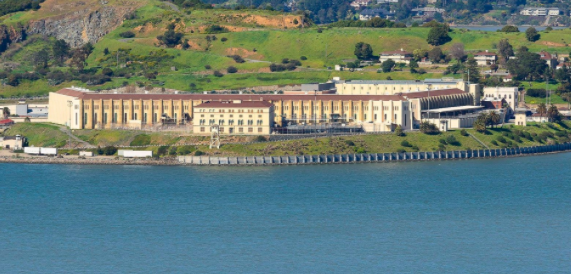Inmates in federal prisons, state prisons and local jails should be in the first cohort of people to be offered COVID-19 vaccinations.
One in five prisoners in the US has been reported to have been infected with COVID-19. That’s 20 percent of people behind bars. And that is likely a “vast undercount,” according to Homer Venters, the former chief medical officer at New York’s Rikers Island jail complex.

If compassion for prisoners does not move policy makers or the general public, then eyes should turn to a pair of recent studies, one by the Prison Policy Initiative and the other by the Marshall Project, focused on prisons and jails in the U.S. According to data in these two reports:
- Prisons and jails are “super-spreaders” of the virus, not only among prisoners, but also among people in the communities where prisons and jails are located. It may be hard for a prisoner to break out of jail, but the virus gets out easily, hosted by guards, maintenance staff, and visitors.
- Prisons and jails were responsible for more than half a million reported COVID-19 infections, 566,804 to be exact – in May, June and July alone.
- A big majority of those half-a-million-plus infections were among people who are not incarcerated, rather in the communities in which our prisons and jails are located.
- If those 566,804 people were a country, that country would rank fifth in the world for reported COVID-19 infections for this period – right after the US, Brazil, India, and Russia.
- The state with the largest number of prison and jail related infections is California, with 113,969 cases – again, in May, June and July alone. The infection rate among prisoners in California is even higher than in the country as a whole – one in four, or 25 percent.
- The community with the largest number of prison and jail related infections in the country is the Los Angeles-Long Beach-Riverside area, as defined by the U.S. Bureau of Economic Analysis (BEA), with 94,221 casesduring those three months.
- The San Francisco-Oakland-San Jose area, as defined by the BEA, ranked 17th in the nation with 5,298 prison and jail related infections.
Are all you “free” men and women feeling safe right now?
In August, California Governor Gavin Newsom announced that Ralph Diaz, the former head of the California state prison system, would retire in October. Diaz had been the target of sharp criticisms for his approval of a transfer of 121 prisoners from the prison in Chino to San Quentin. This transfer, by all accounts, resulted in a massive COVID-19 outbreak in San Quentin, including 28 reported deaths, so far.
Assemblymember Marc Levine, a Democrat whose district includes San Quentin, has been quoted saying that “The spread of COVID-19 at state prisons was a preventable public health disaster and a failure of CDCR [California Department of Corrections and Rehabilitation] leadership at the highest level.”
That “highest level” should include Newsom. It is hard to believe that Newsom was unaware of Diaz’ approval of the Chino transfer. Newsom has also done little in response to demands that the prison population be spread out and thinned out in order to prevent the “public health disaster” that our system of mass incarceration has spawned.
Infections among prisoners show no sign of slowing down. In fact, last week the surge of new COVID-19 cases in US prisons reached the highest level to date. We are all, prisoners and non-prisoners alike, suffering the consequences.
The least Newsom could do is to arrange to offer the vaccine to state prisoners, for the safety of all Californians.



